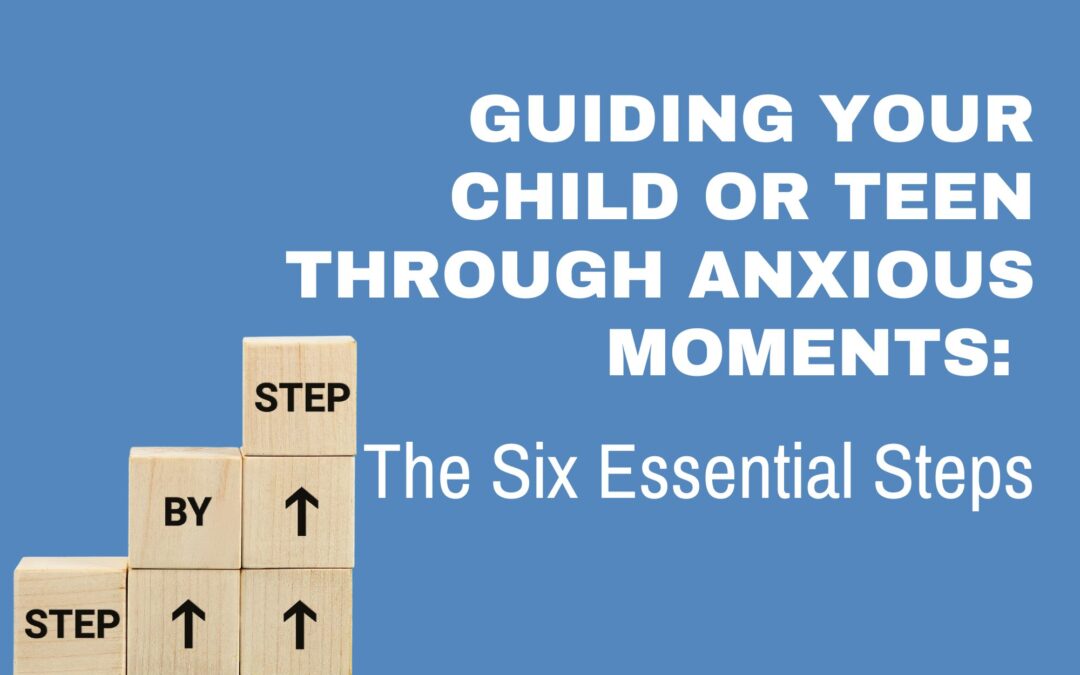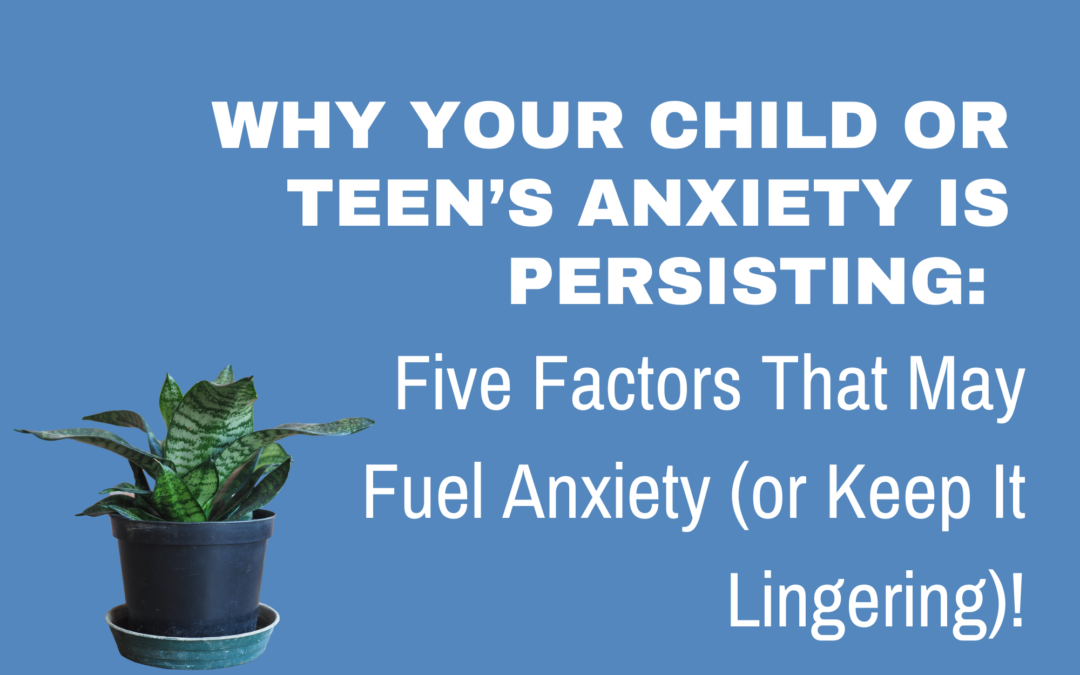
Guiding Your Child Through Anxious Moments: The Six Essential Steps
Parenting through moments of anxiety requires a nuanced understanding of how to assist your child in the midst of overwhelming emotions. This article will provide a detailed exploration of the six crucial steps outlined in our free guide, “The Six Steps to Take with Your Child or Teen in the Moment of Anxiety,” offering insights into each step to empower you as a parent. If you don’t have the guide yet, you can find the link at the bottom of this article.
Step 1: Reflecting:
- The initial step in supporting your child during anxious moments is to reflect back what you hear. This simple act establishes a foundation for effective communication, demonstrating that you genuinely understand and acknowledge their concerns. This step can be as simple as saying, “You’re really worried about your test today.”
- If you’re skeptical about how important this is, pay attention to the next time you are struggling and take note of how the person you are talking to responds. Are they letting you know that they hear you in some way? If not, how does it feel to not be sure that they are really hearing you.
- Tip for this week: This week, when someone you know is struggling try reflecting back to them what they are telling you. Notice what happens. Do they share more? Do they seem grateful and heard? Do they get annoyed?
- Pro tip: Tone and genuineness is everything! If this sounds forced, it will be obvious and there will be a very different response to reflecting.
Step 2: Empathizing with Words and Body:
- Following reflection, extend empathy through both words and body language. Whether it’s a comforting touch, a hug, or a supportive posture without any physical touch, empathizing reinforces the connection and understanding between you and your child. Extending empathy does not mean that you have to agree with your child or teen’s perspective or even “get it”. It simply means that you believe that they really are struggling, and you feel for them in that struggle.
- A common struggle we hear from parents is that it’s really hard to empathize with their children when it seems like their reaction is very out of alignment with the reality of the situation. You are not alone if you have a hard time empathizing with your child. It can be really challenging at times to dig deep and find this.
- Tip for this week: Think of a time that YOU were struggling with something that someone else didn’t really seem to understand. How did they respond to you? How would you have liked them to respond? Hold this memory in mind when you are trying to find this empathy for your child or teen. No matter what the struggle is, human emotion can be a real struggle and having a person just BELIEVE that you feel this way WITHOUT trying to talk you out of it is ginormous step toward breaking free of the chains of emotion.

Step 3: Being Clear:
- Establishing clear boundaries is crucial when helping your child navigate anxiety. Clearly communicate what you can and cannot do, maintaining consistency in your decisions. This clarity provides a sense of structure and reliability for your child. If your child is asking to skip school, be clear on whether or not that is an option. Wavering in decision making and boundaries can actually feed anxiety and make it even harder for your child to move on themselves.
- You won’t always know what your decision ‘should’ be. This is because helping anxious kids and teens is nuanced AND it can bring up personal triggers in the adults trying to help. Be kind to yourself in this venture. In general, we don’t want to allow avoidance when that is possible (but it’s way more complicated than this). Make a decision, stick to it, and show support for your child if they don’t like it. We make decisions for our children all the time that they don’t like (flu shot, anyone?!). This is part of parenting and you CAN do this.
Step 4: Encouraging:
- Expressing belief in your child’s abilities is a pivotal step. Use affirmations such as “I know you can handle this” or “I believe in your capabilities” to instill confidence and motivate them to face their anxious thoughts.
- Research has shown us that when parents express to their children that they believe in their ability to cope instead of express concern about their ability to cope that kids tend to have LESS anxiety over time. How cool is that?
- Tip for this week: Come up with a go-to encouraging statement you can tell your child or teen that seems natural for you to say. Write this down in your notes in your phone so you can easily access it when emotions are high.
Step 5: Modeling:
- After offering support and encouragement, it’s imperative to embody those sentiments. Actively demonstrate your confidence by avoiding prolonged rumination and continuing with your daily routine. Modeling reinforces the positive mindset you’re encouraging in your child and shows them that you believe what you are saying.
- This might look like getting in the car and waiting for them, or getting up to continue getting ready for the day. You may have thoughts that make you doubt if what you are doing is the right thing. This is natural and understandable. Remind yourself that you are doing the work to learn what the science tells us about anxiety. You can do hard things!
Step 6: Waiting It Out:
- The final step involves allowing your child to experience and process their emotions without rushing to find quick relief. By patiently waiting out the difficult emotions, you create space for your child to learn how to manage their anxiety in a healthy manner. This can feel counterintuitive in parenting, but allowing a child their own time and space to see that anxious emotions resolve without quick fixes is powerful and builds independence in coping.
- This may look like silently sitting with them in a supportive way. This may also look like going and finishing the task you were doing before that and checking in with them in 10 minutes to see how they are. This does NOT mean that you are ignoring them. You are sending a CLEAR message that feelings come and go, this is hard, and you are here for them while their body resets.
Guiding your child through moments of anxiety requires a thoughtful and systematic approach. By integrating these six steps into your parenting toolkit, you not only provide immediate support but also contribute to the long-term emotional well-being of your child. Recognizing and addressing anxiety in a manner that emphasizes reflection, empathy, clarity, encouragement, modeling, and patience fosters growth, understanding, and trust in your parent-child relationship.


Recent Comments